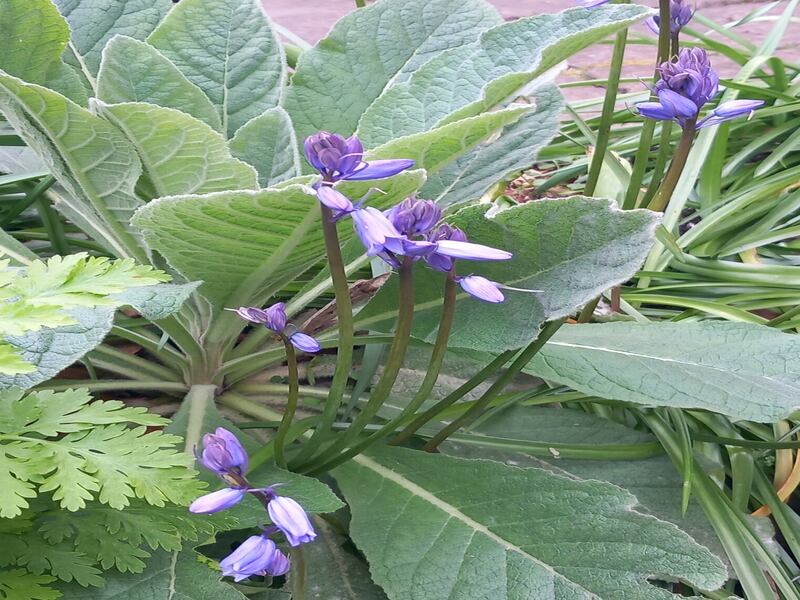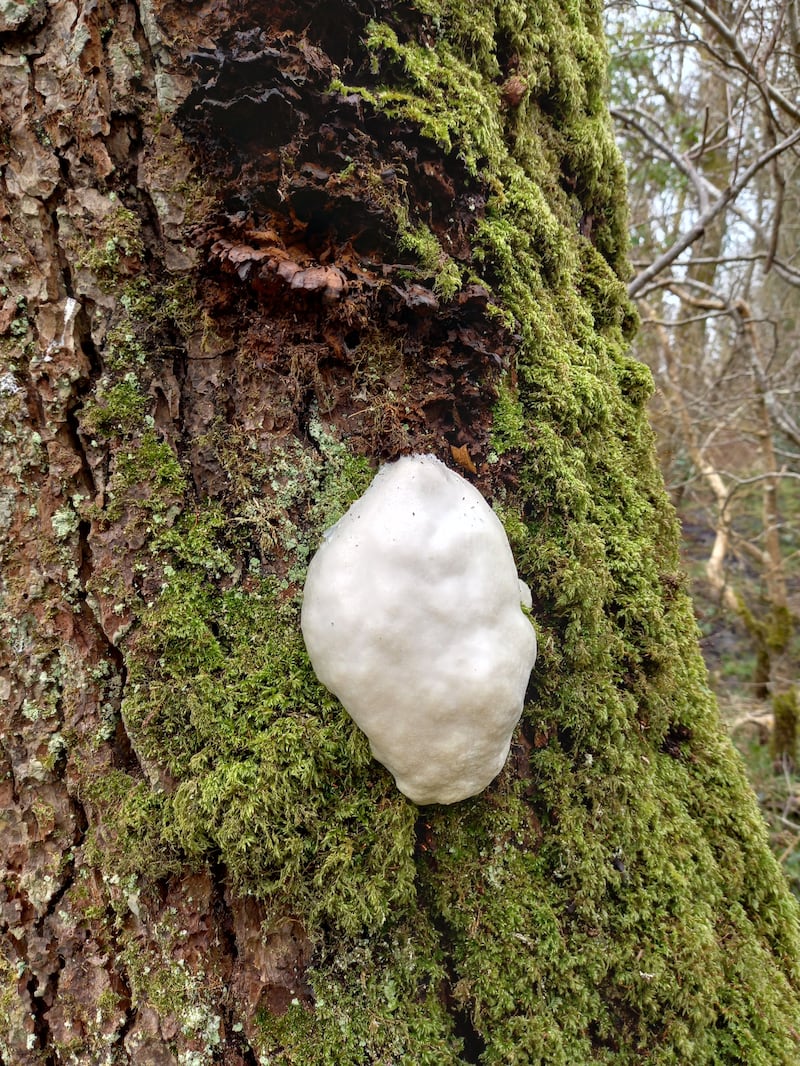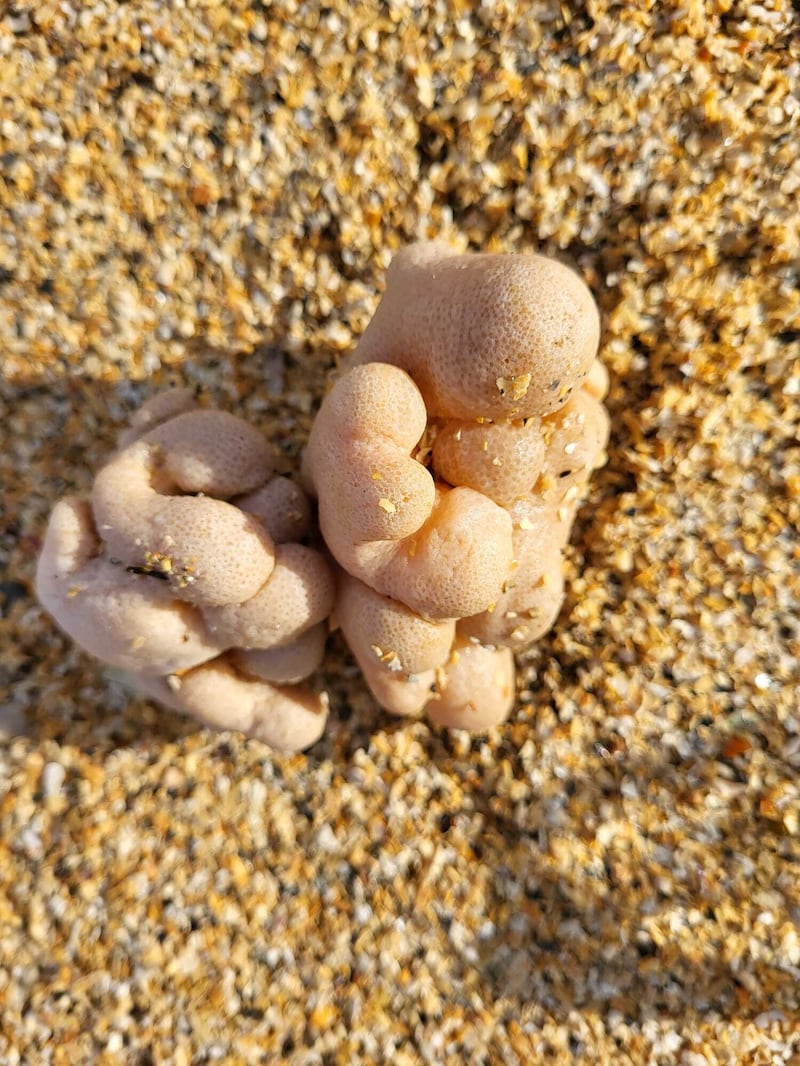Here is a picture of the male hairy-footed flower bee, which my husband Martin Fitzpatrick took in the garden at the end of April. Mary Molloy, Harold’s Cross
This is a new Irish solitary bee species. It was originally seen by Mary last year and confirmed as the first Irish record by Una Fitzpatrick of the National Biodiversity Data Centre. It has a single flight period each year from early March to late May – so there is still plenty of time to keep an eye out for other populations, particularly along the east coast. The female is all black with orange hairs on its hind legs. It has since spread to the southern end of Harold’s Cross where it was seen feeding on the yellow flowers of bolted cabbages. Further records of its spread are welcomed by the centre.

Can you settle an argument between me and my neighbour: Which of us has the true native bluebell? E Glynn, Ennis
The first photograph is the true Irish native bluebell, a plant of woodland and shady habitats. It is recognisable by the fact that the flowers are borne on one side of the stem only, in a long, gracefully curving, raceme with six strongly recurving lobes on each flower. The second photograph is the Spanish bluebell, which is often what people are given in garden centres. The flowers are erect and grow all around the stem. It will hybridise with the native bluebell and the resultant cross is fertile and can become invasive. Try to insist on Irish bluebell bulbs when planting in the autumn. It surely was the native bluebell that Gráinne used to put Fionn Mac Cumhaill and his warriors to sleep so she could elope with Diarmuid. But as all parts of it are poisonous, do not try this today.
READ MORE

On a walk in an estate in Riverstown I saw this strange fungus. It was on a tree in a wet bog. After some research I still do not know what it is. Rory O’Hara, Co Sligo
Mycologist Kieran Connolly tells me that it is a slime mould called Enteridium lycoperdon, or the false puffball. This is its fruiting body that typically occurs on dead standing trees in spring, especially alder.

After a windy night I found these washed up on the strand. Is it a coral? Anna Walsh, Co Dublin
This is a soft coral, which goes by the gruesome name of dead man’s fingers as it is considered by some to resemble soft bloated fingers. Each “finger” is a whole colony of tiny white feeding polyps. Dead man’s fingers usually grow in deeper waters on wrecks, so this was washed ashore during the storm.
A nesting barn owl during the breeding period. Shared by Birdwatch Ireland
Niall Hatch of Birdwatch Ireland sent in this picture of a nesting barn owl in a box in North Cork. There are two live cameras recording the goings-on. The owl has already laid five white eggs and they are now incubating. The cameras will continuously monitor the whole breeding period. So, if you want to witness the eggs hatching or the growing chicks being fed with delicious mice and young rats, go to www.birdwatchireland.ie.
Barn owls have decreased by about 50 per cent since the 1950s, with the greatest losses in northern and eastern Ireland. Agricultural intensification and greater exposure to rodenticides (rat poisons have been detected in 80 per cent of our barn owls) are the main causes of the decline. Owl nesting boxes provide valuable breeding sites as these owls breed indoors in ramshackle, disused buildings.
Please submit your nature query, observation, or photo with a location, via www.irishtimes.com/eyeonnature














